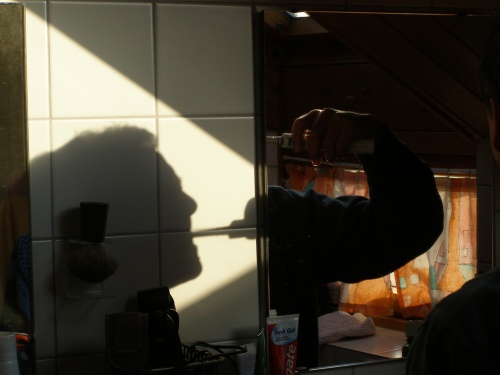
I’m very lucky. The only time I was ever up shit creek I just happened to have a paddle with me. ~ George Carlin
If you google “fifa world cup hiv” and click on the “I’m feeling lucky” button, you will find a good article from allAfrica.com about how FIFA is hindering HIV prevention in South Africa during this year’s World Cup. But luck’s a chance, and you could just as well have run across predictable propaganda in a corporate-friendly Reuters article. Reading the latter, you would think FIFA is leading the campaign with banners flying and money sacks open. The truth is just the opposite. In a sport devoted to the glorification of hard young bodies, unheard-of personal wealth, and vaunted celebrity, HIV is an image-tarnisher, an unlucky coin toss in life’s game of chance. FIFA’s neglectful attitude to HIV prevention and its lack of engagement with and support for local AIDS organizations is making headlines. Sexually active football fans will be in need of much good luck in the coming month. Their health seems to be of little concern to football organizers, who have spared no effort to make sure that supplies of beer will not run out.
When you think of the extraordinary sums of money to be made in the coming weeks and the fabulous riches of the football clubs, it is an outrage that FIFA has not donated at least the modest half million dollars (4 million Rand) required by the South African National AIDS Council to fund an HIV prevention campaign during the tournament. It is equally appalling to learn that FIFA is actively banning the distribution of condoms at World Cup stadiums and other venues.
Although the lords of football made the right noises in a public announcement earlier this year, FIFA is now being criticized by AIDS organizations, both for its action and inaction in South Africa, and for its general insouciance and ignorance about HIV prevention. In the midst of contradictory statements and corporate spin, it emerges that about all FIFA has actually agreed to is the installation of condom dispensers in toilets at the stadiums. It also claims to have encouraged health authorities to set up “fan service areas” in South African cities during the tournament. These feeble gestures come as the planet’s wildest party is about to begin in a country with the largest number of HIV carriers, with an estimated 5.7 million people infected. There are 1,400 new HIV infections every day and nearly 1,000 AIDS deaths.
“To date Fifa has not permitted any civil society organisation to distribute HIV- or health-related information and Fifa has not provided any written confirmation that condoms may be distributed at stadia and within the fan-fests,” South African AIDS groups said in a statement. “This is despite the fact that commercial sponsors selling alcohol will have dedicated spaces available.”
For the sex trade a World Cup event is like having all the navies in the world dropping anchor in your home port. Vats of alcohol are sure to be consumed as foreign fans drink to lady luck and rub shoulders with locals. But in a country where one in five adults is living with HIV, the price of throwing caution to the wind and having unprotected sex with a local, let alone a sex worker, could be extremely high.
It is estimated that 100 million condoms will be needed to meet increased demand during the World Cup. Despite some generous donations from Britain and the UN, there probably won’t be enough condoms for football revellers. That’s bad enough, but as a South African expert has said, the problem is not just the quantity of condoms available – it’s also the lack of a high-profile safer sex campaign.
FIFA is not the only one at fault. South African laws that criminalize sex work compound sex workers’ individual risk for HIV and compromise broader public health goals. A massive international sporting event like the World Cup will undoubtedly increase demand for paid sex and, particularly in a country with hyper-endemic HIV, will guarantee a sharp rise in HIV-infection rates through unprotected sex.
In a paper published last December in Globalization and Health, a group of activists called on South Africa to respond to the challenges the sex industry poses in a strategic and rights-based manner, using the World Cup events as an opportunity to attribute more weight to public health goods than to an ideology based on sexual moralism – an ideology that time and again has been proven ineffective in preventing HIV in South Africa and beyond. The authors argue for a moratorium on the enforcement of laws that persecute and victimize sex workers during the World Cup period.
The prospects are not encouraging. While the world rightly celebrates South Africa’s pride in hosting the games, amidst all the hoopla the HIV epidemic is only going to grow worse. When the party is over and the teams and their fans have gone home, as FIFA calculates its profits epidemiological statistics will begin to tick ever upward. You’ll be able to google them in a year or so.
Luck’s a chance, but trouble’s sure. It’s one thing to click the “I’m feeling lucky” button – but having sex without a condom during the World Cup is like being up the creek without a paddle.
flickr photo by dmountain











